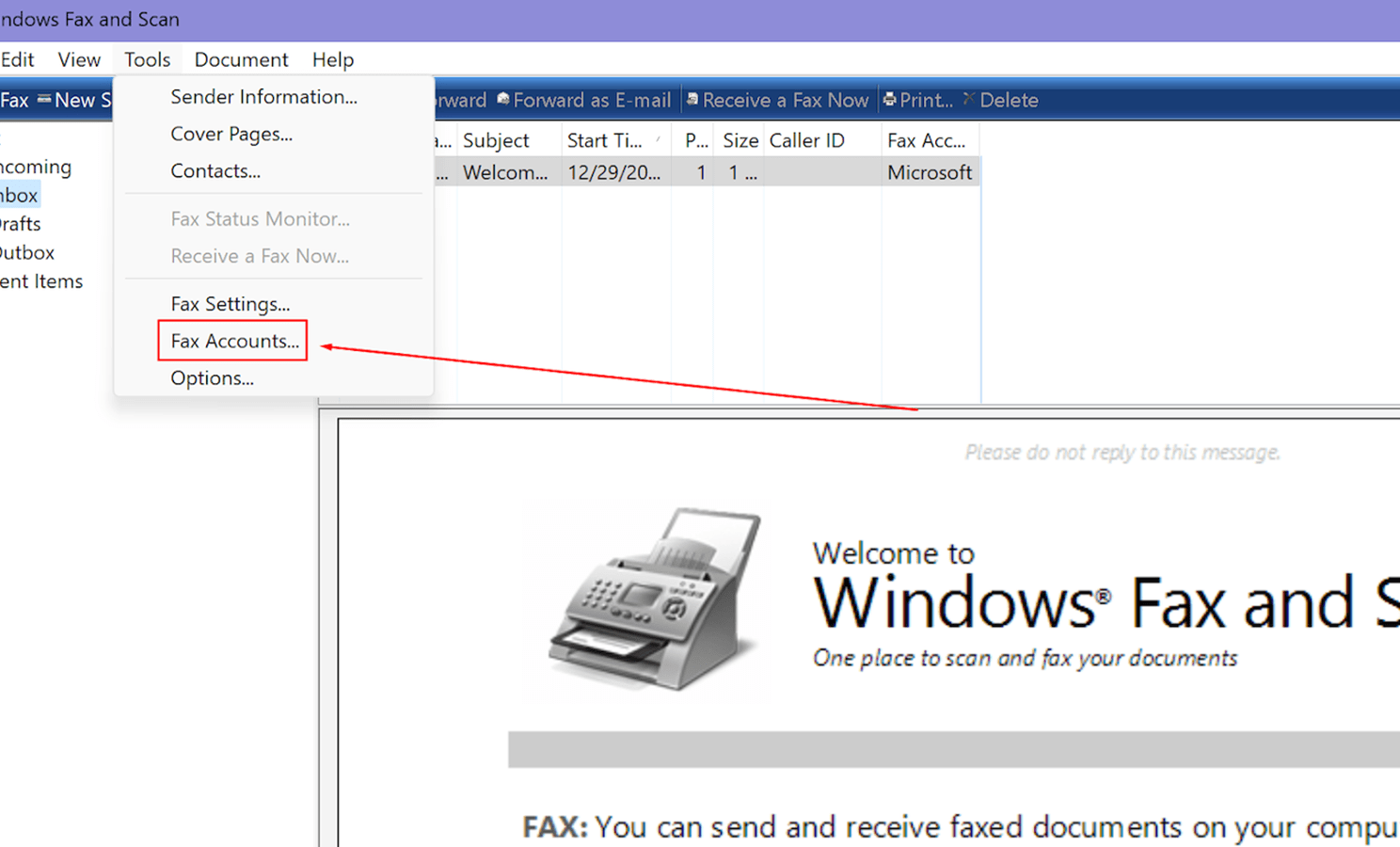Windows Fax and Scan, a built-in program in the Windows operating system, allows you to send and receive faxes without a fax machine.
It supports various document types including Word documents, PDFs, images, spreadsheets and more. This tool also enables administrators to manage multiple fax machines, multifunction printers (MFPs) or fax servers through one centralized application.
So if you’re ready to simplify the faxing process with a free and easy tool, let’s take a look at how to use Windows Fax and Scan in just seven simple steps.
Important: To use Windows Fax and Scan, your computer must have a built-in fax modem, otherwise you must connect an external fax modem. I’ll talk more about this as we go, but if you’re in a hurry, you can use an online fax service to send documents from a device without a fax modem.
Windows Fax and Scan setup
The handy fax and scan tool has been part of the Windows family for quite some time and extends its compatibility from Windows Vista all the way up to the latest Windows version. Whether you’re new to digital faxing or a seasoned pro, enabling Windows Fax and Scan is straightforward.
First, let’s talk about what you need to get started. The Windows Fax and Scan software requires a fax modem. This little piece of hardware turns your computer into a fax machine.
But before you start rummaging through your computer’s internal mechanisms, you’ll want to find out if you already have one built into your computer or laptop.
Looking for a built-in fax modem
You can find out if you already have a built-in modem by checking your computer system and the process is quite simple:
- Press on Start button on your computer.
- Type Device management into the search field and press Enter.
- In Device Manager, look for a category with the name Modemsand click on it to see what’s on the list.
If there isn’t a category for modems, it means you don’t have one built in.
Most newer laptops and computers don’t come with a fax modem, so don’t be surprised if you can’t find anything in Device Manager.
Setting up an external fax modem
If you discover that your computer does not have an internal fax modem, there are still a few options available. You can easily find external fax modems, often as USB devices, or as a card that can be installed in your computer’s PCI slot.
This won’t be a huge investment as external modems can be found for under $20.
If you’re going down the external modem route, here’s a quick guide:
- Check the manufacturer’s manual: It is always a good idea to consult the manual that comes with the modem, especially to understand any specific installation instructions.
- Buy the modem: You can find USB or card fax modems online or at your local electronics store.
- USB installation: Simply connect the modem to a USB port on your computer. If your modem comes with a driver CD, be sure to install the drivers.
- Modem card installation: If you have a modem card, shut down the computer and install the card into an available PCI slot. Restart your computer and you should be good to go.
Remember that tampering with your computer’s hardware can sometimes affect your warranty. So if you are not comfortable with the DIY approach, seeking professional assistance is a wise move. It may cost a little more to have someone install a modem card for you, but it’s better than damaging your computer.
You can also avoid all the hassle by using an online fax service or downloading an app to send a fax from an iPhone or Android phone.
Setting up Windows Fax and scanning
To begin faxing, you must first connect a phone line to your computer via a fax modem and activate the fax and scan software. The easiest way to do this is to connect a landline telephone to your computer in the appropriate jack or to the jack on the external fax modem.
After setting up your line, follow these steps to ensure that Windows Fax and Scan is ready to work with your fax modem and communication line:
- Start by searching for Fax and scan in the Windows search bar. Select the Windows Fax and Scan app that appears in the results.
- On your first visit to Windows Fax and Scan, you must configure your modem to be able to send correspondence. To do this, navigate to Tools menu in Windows Fax and Scan.
- Go to in the Tools menu Fax accounts.
- Click on in the Fax Accounts window Add.
- You will then be presented with a fax setup dialog where you must choose to do so Connect to a fax modem. Select this option and your pre-installed modem should appear.
When you connect your fax modem to your PC, the necessary drivers should be installed automatically. If they do not, follow the instructions that came with your fax modem for proper installation.
Automatic vs manual fax calls
Once you have selected your fax modem, complete the installation. You may be asked to choose how the phone line will answer calls – automatically or manually.
If you select Automatic, the fax application will automatically answer incoming calls and receive faxes. If you select Manual, you must select manually Receive a fax now in the Windows Fax and Scan app every time you want to receive a fax.
Seven steps to send a fax with Windows Fax and Scan
Once your computer is equipped to send and receive faxes via Windows Fax and Scan, navigating the software becomes quite simple.
If you need to fax a check or other important document, consider sending a free test fax as a way to make sure everything is working properly.
Here’s a walkthrough that will make sending your first fax with Windows a breeze:
Step 1: Start a new fax
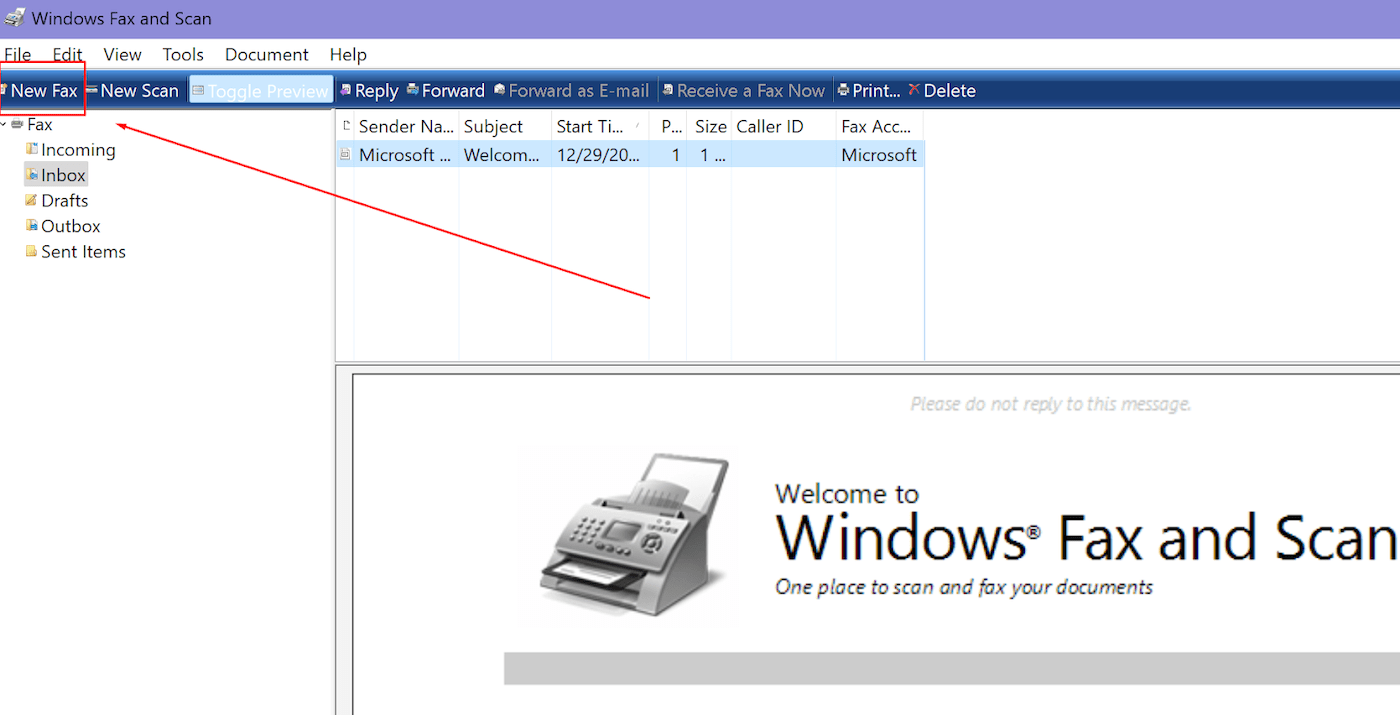
Open the Windows Fax and Scan software and select New fax option.
Step 2: Enter the recipient’s fax number
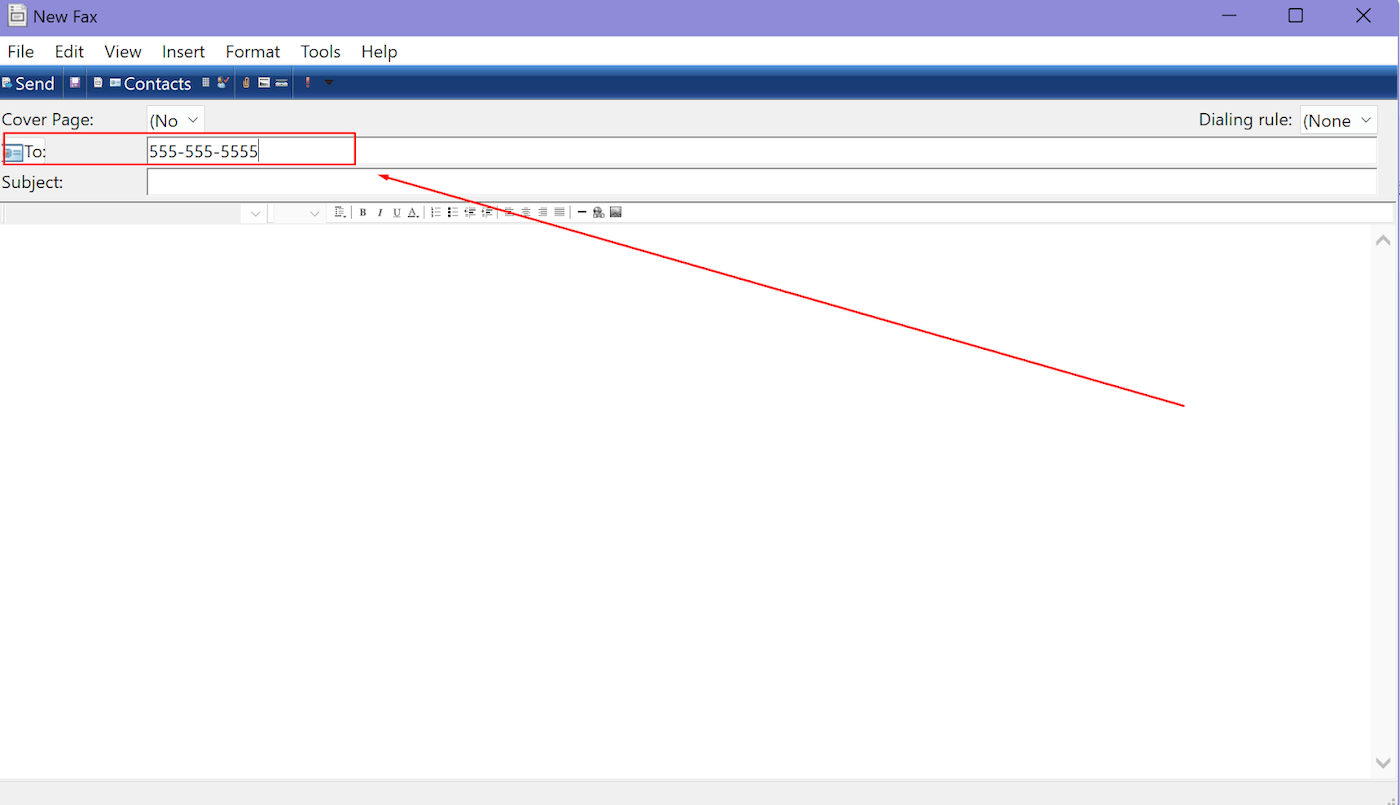
In the New Fax window that appears, enter the fax number of the desired recipient in the ‘To’ field. You also have the option of clicking ‘To’ to open your address book and select a recipient from there.
Step 3: Incorporate a front page
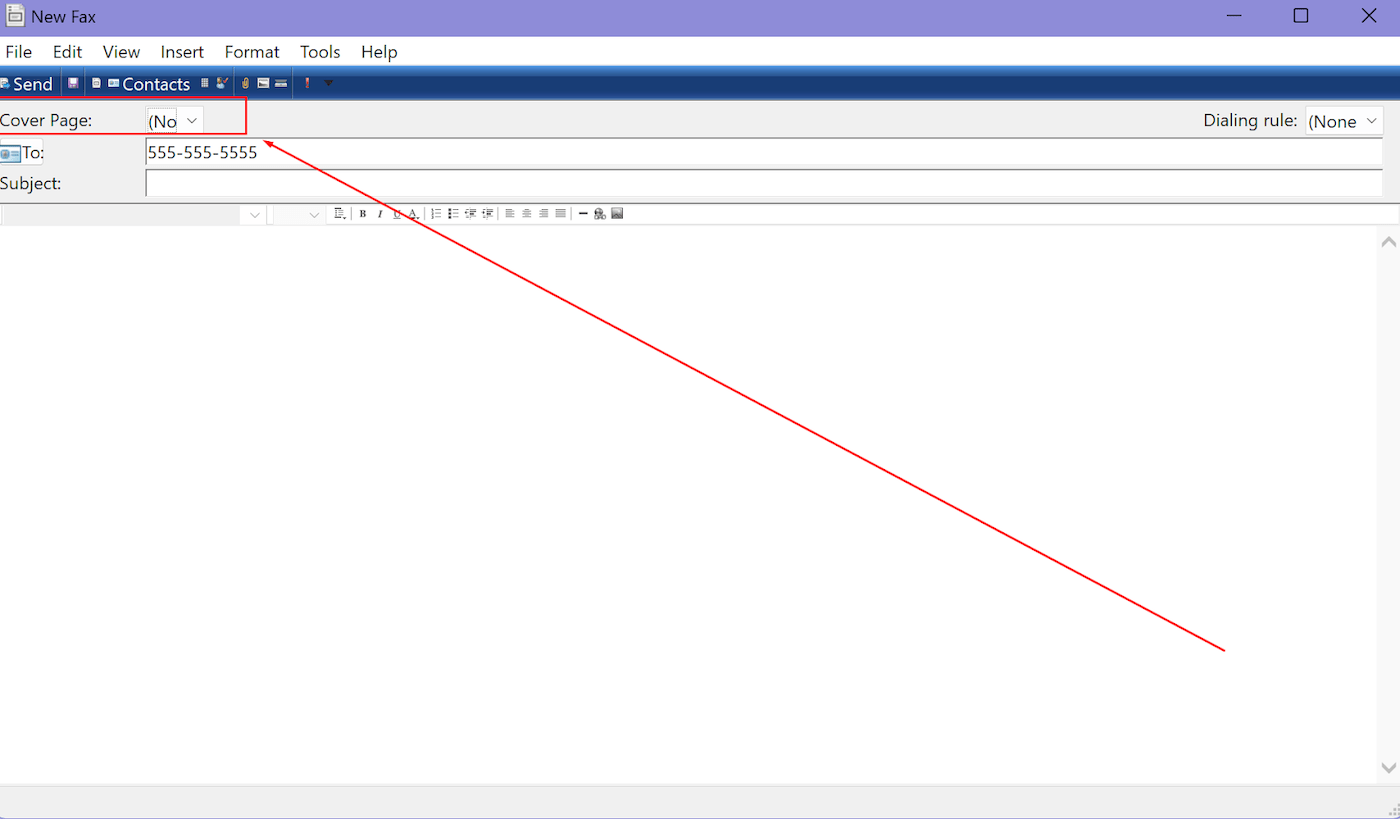
If you wish to include a cover page with your fax, this option is conveniently located just above the ‘To’ line on the fax form. Feel free to use these fax cover page templates.
Step 4: Complete the subject line
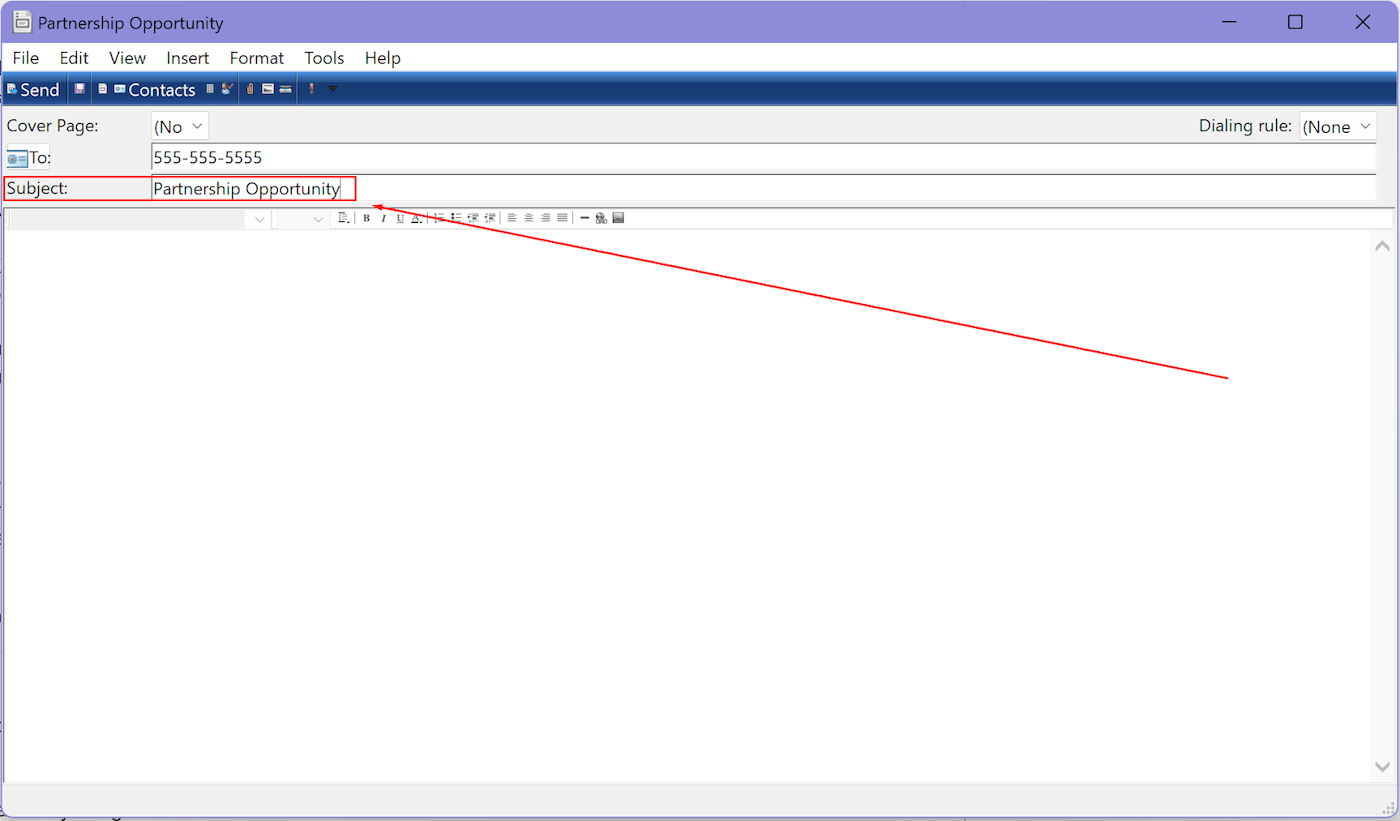
Next, enter a subject for your fax. This field is located above the body of the message on the left side.
Step 5: Enter your message

Continue to enter the information you want to fax in the body of the fax form.
A formatting toolbar at the top of the document area allows you to format text, introduce hyperlinks, or embed images into your fax document.
Step 6: Add additional documents or media
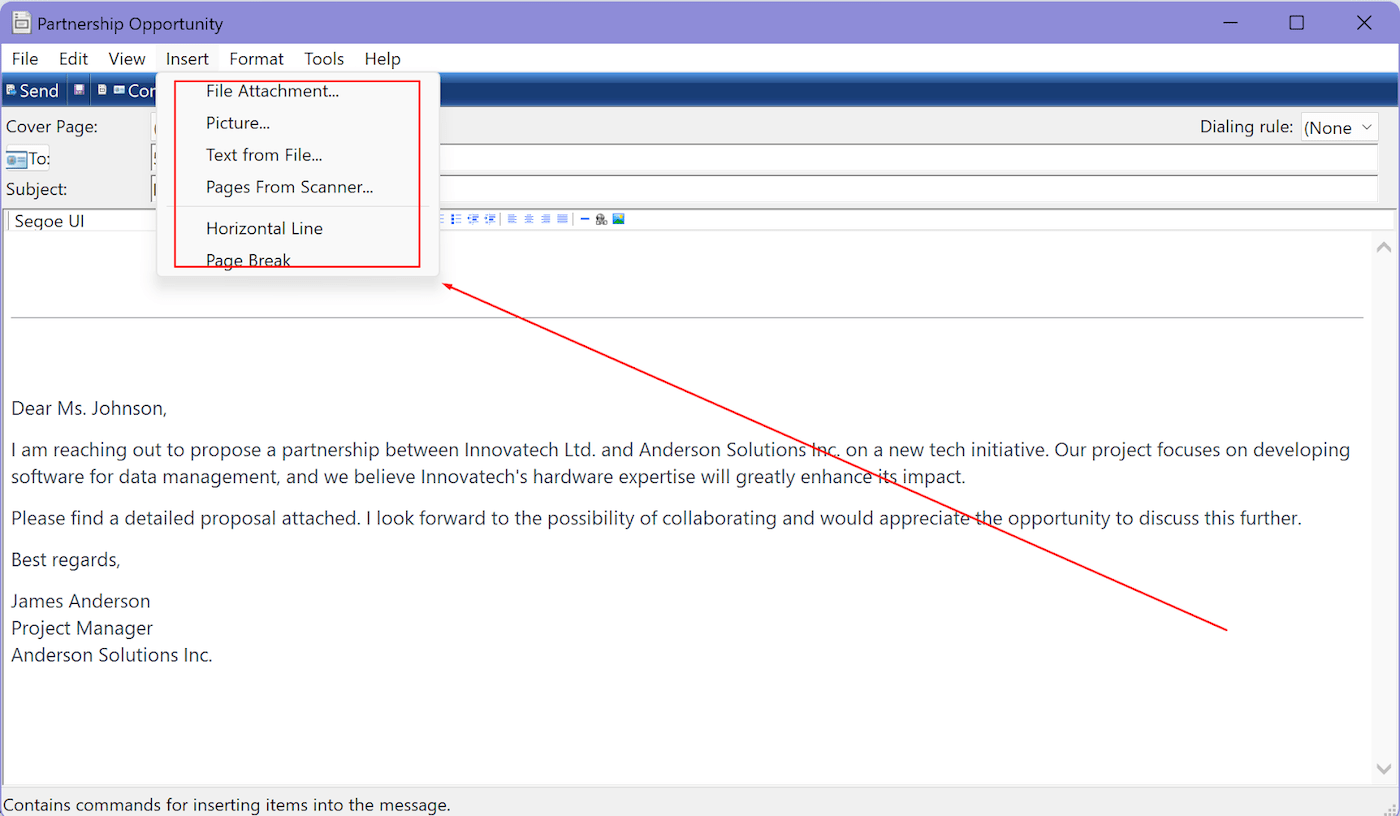
You can also add scanned documents or file attachments by clicking the toolbar at the top of the fax form. Select Insert to open a drop-down menu of items.
Step 7: Click submit
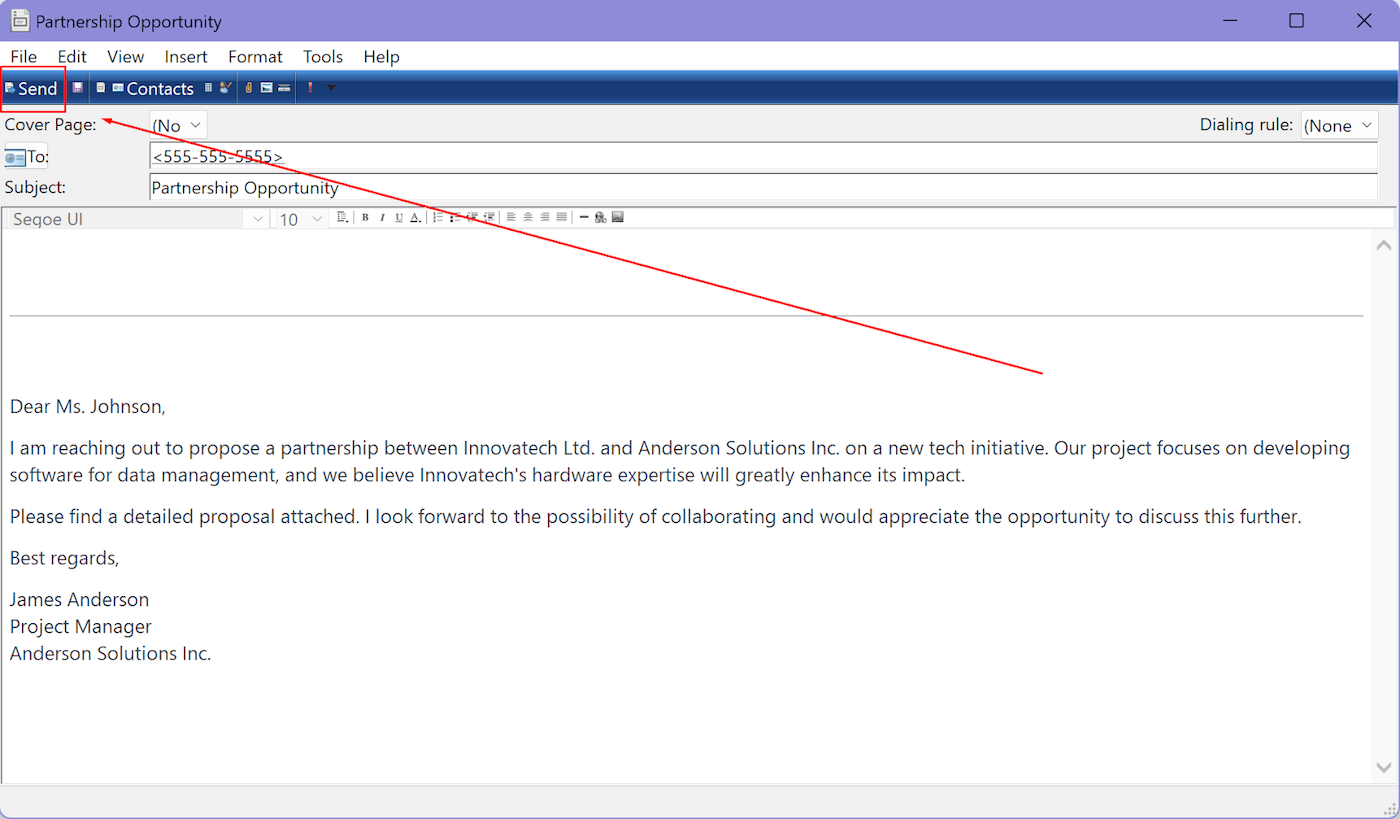
When ready, click Send to send your fax. This button is located in the upper right corner of the window.
SEE: Try these tips if your fax isn’t going through, and remember to make sure the information in the fax header is accurate.
How to receive a fax with Windows Fax and Scan
With Windows Fax and Scan, you have the flexibility to set up fax reception either automatically or manually.
If you choose the automatic setting, the software will automatically answer incoming calls and receive faxes without your intervention.
This is handy if you frequently receive faxes. However, if you want to have more control over receiving faxes or do not receive them often, you can choose the manual option.
How to receive a fax manually with Windows Fax and Scan
To manually receive faxes using the fax service when the phone rings, make sure the Windows Fax and Scan application is open.
- Start Windows Fax and Scan.
- Click on Fax option located in the lower left panel.
- Now navigate to Tools menu in the upper left corner of the application.
- Select from the toolbar Receive a fax now. This allows your computer to accept incoming faxes when the phone line rings.
How to automatically receive a fax with Windows Fax and Scan
To set up automatic fax reception, follow these steps:
- Go to Tools and then select Fax settings.
- In it General tab, check that Allow the device to receive fax calls option is selected below Send/receive settings.
- Then find Answer automatically after _ ringsand enter the desired number of rings before the fax service answers, then click Okay.
This will automatically enable your computer to receive incoming faxes without any manual intervention.
As you can see, Windows Fax and Scan offers a user-friendly way to send and receive faxes using your computer. With these simple steps, you can easily configure the software for efficient fax communication.
There are additional features in Windows Fax and Scan, such as creating a contact list or custom cover pages. Be sure to take the time to test and familiarize yourself with the software to ensure smooth and efficient faxing in the future.
Remember – fax is only as secure as your network. Like any other form of communication, it can be hacked and account information can be compromised. Follow basic network security best practices and take extra care if faxing while connected to public networks.
